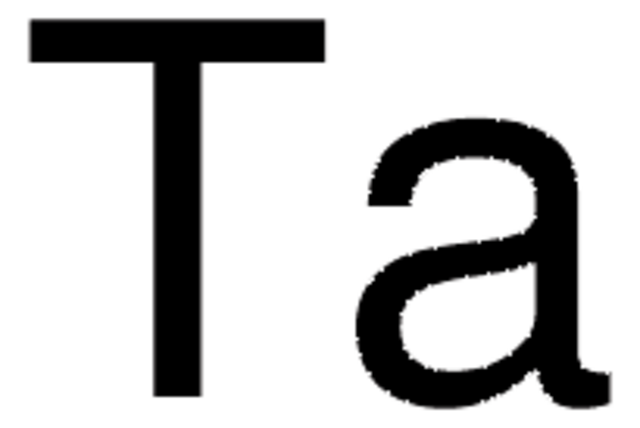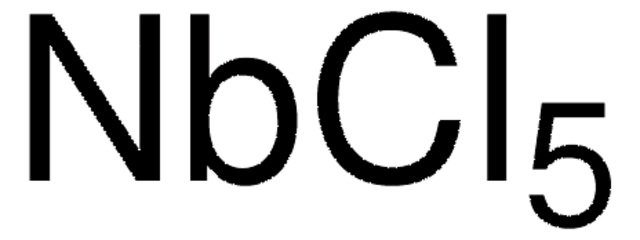262781
Niobium
foil, thickness 0.25 mm, 99.8% trace metals basis
Sinônimo(s):
Columbium
About This Item
Produtos recomendados
Ensaio
99.8% trace metals basis
Formulário
foil
resistividade
13-16 μΩ-cm, 20°C
espessura
0.25 mm
p.e.
4742 °C (lit.)
pf
2468 °C (lit.)
densidade
8.57 g/mL at 25 °C (lit.)
cadeia de caracteres SMILES
[Nb]
InChI
1S/Nb
chave InChI
GUCVJGMIXFAOAE-UHFFFAOYSA-N
Procurando produtos similares? Visita Guia de comparação de produtos
Categorias relacionadas
Quantidade
Código de classe de armazenamento
13 - Non Combustible Solids
Classe de risco de água (WGK)
nwg
Ponto de fulgor (°F)
Not applicable
Ponto de fulgor (°C)
Not applicable
Equipamento de proteção individual
Eyeshields, Gloves, type N95 (US)
Escolha uma das versões mais recentes:
Já possui este produto?
Encontre a documentação dos produtos que você adquiriu recentemente na biblioteca de documentos.
Os clientes também visualizaram
Artigos
Can there be an effective strategy for finding breakthrough materials, since they are, by definition, unpredictable? One answer is found in Combinatorial Materials Science techniques, which represent a powerful approach to identifying new and unexpected materials.
Biomedical implants are essentially foreign substances within the human body that must survive many years’ exposure to demanding mechanical and physiological conditions. Despite these challenges, metal implants have been widely used to substitute for or rebuild hard tissues such as bones and teeth.
Nossa equipe de cientistas tem experiência em todas as áreas de pesquisa, incluindo Life Sciences, ciência de materiais, síntese química, cromatografia, química analítica e muitas outras.
Entre em contato com a assistência técnica






